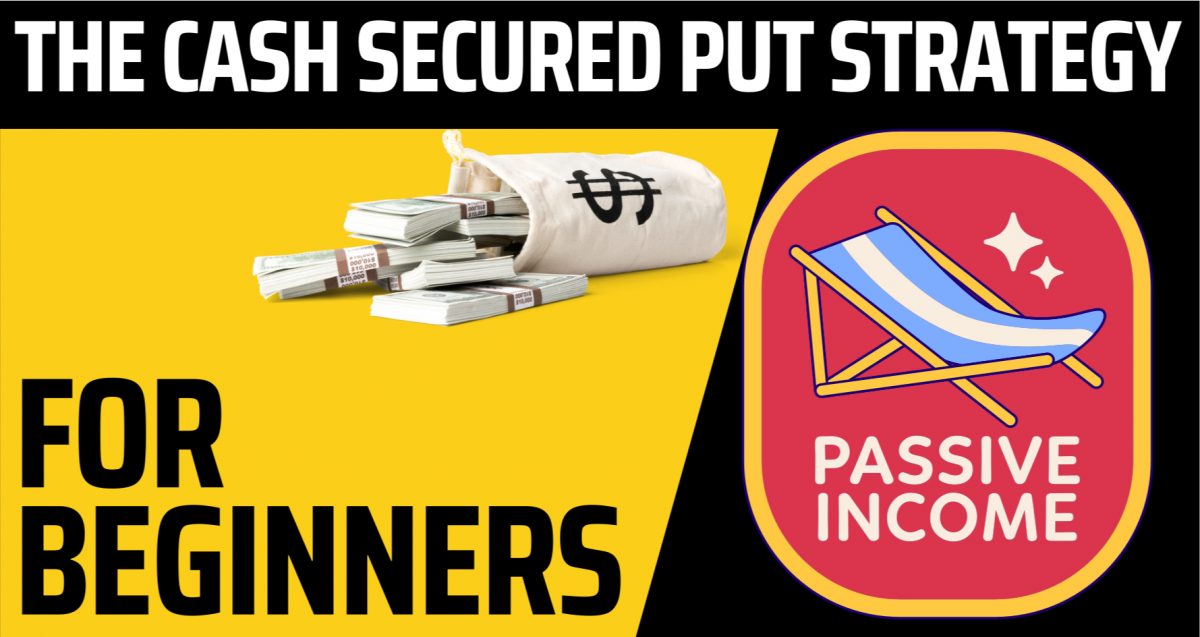Cash Secured Puts

Retire on $1 Million & $100,000 in Dividends with the JEPQ ETF?
In this video I discuss the JEPQ ETF or the JP Morgan Nasdaq Equity Premium Income ETF and give my thoughts on rather or not this could be used for retirement investors as a passive income source. Near the end of the video I go over some hypothetical examples about the amount invested and how […]

Options Trading Fundamentals: Understanding Implied Volatility & Beta
In the video below, we discuss both implied volatility & beta in the context of options trading. I made the video a while back, but figured it would be a good reference to publish to the website. Regardless of your specific options trading strategy, I believe this information can be valuable for you. That’s because […]

This Monthly Dividend ETF Pays 11.75% (SPYI)
In the video below, I dive into the NEOS S&P 500 High Income ETF (SPYI), which has recently become an increasing competitor to some other high-yield dividend funds. The SPYI ETF has been increasing in popularity among investors, positioning itself as a potential alternative to other, more well-known high-yield dividend ETFs, including JEPQ and JEPI. […]

How to Make $1,000+ Every Month with the JEPQ ETF
Welcome back to Daily Investment Advice! In this video, I discuss the JEPQ ETF or JP Morgan Equity Premium Income ETF (exchange traded fund). This ETF is focused on passive income and utilizing a covered call like strategy to generate regular, monthly income against the ETF. The video specifically discusses this in the context of […]

The Evolution of Passive Income: From Dividends to Digital Real Estate
In the ever changing world of the financial industry (including fintech and AI), Wall Street and banking, the quest for passive income remains a primary consideration for many investors who are aiming to build long-term wealth. Passive income, in terms of the general definition, can be defined as earnings from an enterprise, which could include […]

Mastering Cash-Secured Puts for Beginners: Your Guide to Earning Income While Buying Stocks
When it comes to investment strategies, the allure of generating consistent income while potentially owning stocks at a discount is compelling. This strategy, known as the cash-secured put strategy, offers investors an interesting approach to enter the stock market. In this article, we will unravel the main considerations when it comes to cash-secured puts, guiding […]

The Options Wheel Strategy: A Comprehensive Guide for Beginners in 2024
In the world of financial markets and the wealth management sphere, the options wheel strategy stands out for its potential to generate cash flow on a consistent basis. This strategy is ideal for those who are new to options trading, and for retirees who want to generate regular cash flow on their portfolio, perhaps from […]

The Cash Secured Put Strategy for Beginners (Passive Income with Options)
Do you want to generate income while possibly acquiring stocks at a discount? The cash-secured put strategy is one that seasoned investors often utilize, and it may be a game-changer for your portfolio. But what exactly does it mean to sell a cash-secured put? And how can you effectively implement this strategy in your investment […]
